- Home
- Lord Dunsany
In the Land of Time Page 2
In the Land of Time Read online
Page 2
But Dunsany himself felt the need to strike out in new directions. He abandoned the short story for a time and turned to novel writing. After producing a charming but insubstantial picaresque tale, The Chronicles of Rodriguez (1922), he wrote the gorgeous otherworldly fantasy, The King of Elfland’s Daughter (1924), in a splendid return to his early manner. Both The Charwoman’s Shadow (1926) and The Blessing of Pan (1927) have their distinctive charms; the latter in particular is a lost jewel of fantastic literature in its simultaneous depiction of the triumph of nature over modern civilization and the triumph of paganism over Christianity. While these novels represent, in their greater emphasis on character portrayal and the complexities arising out of a sustained narrative, a development from his early fantasy work, Dunsany made a still clearer break with that work when, in 1925, he sat down to write his first tale of the clubman Joseph Jorkens, “The Tale of the Abu Laheeb.”
On the most superficial level, Dunsany found in the Jorkens tales a convenient means of recording the impressions he gained on his far-flung travels, chiefly in Africa and the Middle East, and chiefly for the purpose of big-game hunting. In his second autobiography, While the Sirens Slept (1944), he makes this motive explicit, telling of the aftermath of an expedition to the Sahara:
It was from material gathered on this journey that on the 29th and 30th March, 1925, I wrote a tale called The Tale of the Abu Laheeb. There was in this tale more description of the upper reaches of the White Nile or of the Bahr-el-Gazal than I have given here; indeed the whole setting of that fantastic story may be regarded as accurately true to life, though not the tale itself. I mention this short story and the date, because it was the first time that I told of the wanderings of a character that I called Jorkens. He was my reply to some earlier suggestion that I should write of my journeys after big game and, being still reluctant to do this, I had invented a drunken old man who, whenever he could cadge a drink at a club, told tales of his travels. When in addition to his other failings I made him a liar, I felt that at least there could be nothing boastful about my stories.8
The Jorkens tales—nearly 150 of which were written over a thirty-year span—brought Dunsany more widespread popularity than even his early tales and plays or his recent novels. They were published in the most widely circulated magazines both in the United States (Atlantic Monthly, Harper’s, Vanity Fair, Saturday Evening Post, Cosmopolitan) and the United Kingdom (Pall Mall Magazine, Spectator, Strand Magazine, John O’London’s Weekly), and were collected in five volumes from 1931 to 1954; a sixth volume was assembled before Dunsany’s death but not issued.
Dunsany’s blunt statement that Jorkens was a “liar” belies the actual scenarios of the stories; for their cleverness resides exactly in the reader’s inability to detect any overt falsehood in them, however grotesque, implausible, or even preposterous they may appear. The secret of the Jorkens tales is their presentation of bizarre, fantastic, even supernatural incidents that resolve themselves in such a way that their outcomes remain secret or become nullified. Hence Jorkens, in “The Tale of the Abu Laheeb,” comes upon a creature in Africa who shares with humanity the use of fire; but this bond prevents Jorkens from shooting him and bringing his carcass back as proof of the creature’s existence. In “Our Distant Cousins,” a friend of Jorkens has made a trip to Mars—but has regrettably lost the one bit of proof (a tiny elephant the size of a mouse) that would have confirmed the fact of his journey. In many tales Jorkens makes and then loses a fortune, while in others he faces almost certain death but narrowly escapes—and after all, isn’t the fact that he lived to tell the tale proof of its veracity?
The Jorkens tales, lighthearted and even frivolous as many of them are, nevertheless manage to underscore several of Dunsany’s central concerns. One particular concern that began to develop around this time was what might be termed the conflict of humanity and nature. Even his early, otherworldly fantasies could be said to have as their focus the need for humanity’s reunification with the natural world; but with the passing of the years Dunsany felt he had to convey the message more forcefully. Mankind in the twentieth century was heading in the wrong direction—a direction that might, in the end, lead to its destruction, or what is worse, its merited overthrow by the rest of the natural world. Industrialization and commerce (with its accompanying prevalence of advertising, one of Dunsany’s bêtes noires) were threatening to rob the world of its stores of wonder and fantasy, and both the animal and the plant kingdom (see “The Walk to Lingham”) were within their rights to throw off the shackles that subjugated them to a race that no longer merited its superiority.
One of the chief ways Dunsany conveyed this topos was by the use of a nonhuman perspective. At its most innocuous, this means the attempt to capture the world as viewed through the eyes and minds of an animal; hence we have the delightful short novel My Talks with Dean Spanley (1936), in which a clergyman, when sufficiently plied with wine, speaks of his firm belief that in a past life he was a dog. Years later this novel was writ large in another lost classic of fantasy, The Strange Journeys of Colonel Polders (1950), in which a bluff, no-nonsense British officer, having offended an Indian swami in his club, finds his spirit lodged in a bewildering succession of nonhuman bodies—a fox, an eel, a cat, a mountain goat, even a jinn. The wondrous felicity with which Dunsany seems to capture the exact sentiments of the animals in question makes this work a delight in spite of its seemingly random structure.
A sharper edge, however, is found in many other of Dunsany’s works of this kind. In the play The Old Folk of the Centuries (1930) a butterfly who is magically turned into a little boy quickly finds the life of a human being far too constricting for comfort, and he finds a convenient witch to transform him back to a butterfly. Another play, Lord Adrian (written in 1922-23 but not published until 1933), comes close to misanthropy. Here an elderly nobleman is injected with the glands from an ape and, rejuvenated, produces an offspring, Lord Adrian; but Adrian’s partial animal ancestry leads him to plan an overthrow of the human race, since “I regard the domination of all life by man as the greatest evil that ever befell the earth.”9 Even the otherwise mild-mannered Colonel Polders, like Gulliver, gradually gains a “distaste for the human race”10 after repeated deadly encounters with humans. Perhaps the greatest of all instances of this misanthropy occurs in a short play, The Use of Man (in Plays for Earth and Air, 1937). Here the spirit of a hapless and not very bright young man is summoned to a council of the spirits of animals somewhere in space, and he has an extraordinarily difficult time justifying the “use” of the human race in the natural scheme of things. He finds that no animal, aside from the slavishly devoted dog, will stand up for his species: the crow doesn’t like man’s guns; the bear resents the fact that he is locked up in zoos; the mouse hates man’s traps. At the very last a single animal comes to man’s rescue: the mosquito finds a “use” in man—he is its food.
From the very earliest of his works, Dunsany occasionally took pleasure in envisioning the eventual extirpation of the human race. Several of the exquisite prose poems in Fifty-one Tales have this as their focus, although in many cases it seems part and parcel of the “cosmic” perspective that Dunsany had adopted at this juncture. In later works it is industrialism that will bring a fitting doom to our race, ridding the world of a dangerous menace and leaving the earth free for the animals to resume their sway. The potent one-act play The Evil Kettle (in Alexander and Three Small Plays) may be Dunsany’s most effective embodiment of this idea. Here the well-known anecdote of the young James Watt looking at a steaming teakettle and envisioning therefrom the awesome power of steam is given a nightmarish twist: at night the Devil comes to Watt and forces him to glimpse a hideous vision of the future with its “dark, Satanic mills” and the earth’s natural beauty corrupted by mechanization. But the Devil casts a spell over him and makes him forget what he has just seen, and we are left with a haunting sense of historic inevitability. Dunsany’s later treatments of this theme—
notably his late novel The Last Revolution (1951), which depicts machines revolting from humanity’s control—are, regrettably, much inferior to this concentrated bit of venom.
One of the subtlest of Dunsany’s treatments of the man-versus-nature theme occurs in what is probably his finest novel, The Curse of the Wise Woman (1933). This work, set entirely in Ireland, brings to the fore the vexed issue of Dunsany’s relations with the land of his ancestors. There had been Plunketts in Ireland since the eleventh century, and Dunsany produced some of his greatest work there; but would he ever abandon his otherworldly realms of dream and fantasy to write about it—its landscape, its people, its rich stores of history and myth? For the first three decades of his career the answer seemed to be a resounding no; although some of his early stories had appeared in such Irish periodicals as the Shanachie and the Irish Homestead, Dunsany himself frequently admitted that he preferred to invent his myths out of whole cloth rather than to adapt existing ones. And yet, he could hardly be unaware that a literary revival was going on in Ireland at exactly the time he began writing. His early plays had been produced at the Abbey Theatre, and he himself was enthusiastic about the plays of J. M. Synge and others. He was well acquainted with James Stephens, W. B. Yeats, Lady Gregory, and other prominent figures in Irish literature. Yeats assembled a slim volume, Selections from the Writings of Lord Dunsany, for publication by the Cuala Press in 1912, in the introduction to which he expressed the following pensive regret:
When I was first moved by Lord Dunsany’s work I thought that he would more help this change [i.e., the Irish literary revival] if he could bring his imagination into the old Irish legendary world instead of those magic lands of his with their vague Eastern air; but even as I urged him I knew that he could not, without losing his rich beauty of careless suggestion, and the persons and images that for ancestry have all those romantic ideas that are somewhere in the background of all our minds. He could not have made Slieve-na-Mon nor Slieve Fua incredible and phantastic enough, because that prolonged study of a past age, necessary before he could separate them from modern association, would have changed the spontaneity of his mood to something learned, premeditated, and scientific.11
This is remarkably on target, and it proves also to have been prophetic: Yeats seems to have sensed that Dunsany would have to renounce his devotion to otherworldly fantasy before he could treat the real world of Ireland in his fiction. There is a gradual decline of the purely fantastic element throughout the entire course of his work, to the point that such later novels as Up in the Hills (1935), Rory and Bran (1936), Guerrilla (1944), and His Fellow Men (1952) have nothing fantastic or supernatural in them, although they nonetheless retain that ethereal delicacy that remained Dunsany’s keynote.
But The Curse of the Wise Woman did not emerge from nowhere; it had decided antecedents, and Yeats was at the center of them. In 1932 Yeats and Lady Gregory established the Irish Academy of Letters. The members chosen for inclusion were to be divided into two categories, “academicians” and “associates”; Yeats and Bernard Shaw explained the distinction: “the Academicians must have done creative work ‘Irish in character or subject’; an Associate need not fall within this definition though he must be of Irish birth or descent.”12 Dunsany was mightily insulted that he was chosen only as an associate (in some of his writings he actually suggests that he was not chosen at all), but as a matter of fact he had up to this point done very little writing “Irish in character or subject,” so his placement in that category (along with such figures as T. E. Lawrence and Eugene O’Neill) was understandable. Nonetheless, Dunsany seems to have been inspired by this perceived slight to write The Curse of the Wise Woman, a poignant novel that explores the numerous conflicts in Irish life—Catholic and Protestant, city and country, progress and tradition, political stability and violence—in a scenario in which the supernatural is reduced to the vanishing point, and may not come into play at all: a “wise woman” (witch), enraged at the threatened destruction of a bog by a development company, seems to summon up the power of nature and bring about a ferocious storm that wipes out the company’s machines and saves the bog. After the publication of the novel, Dunsany was elected as an “academician” member of the Irish Academy of Letters.
The Story of Mona Sheehy (1939) is another superb Irish novel, touchingly describing the fate of a young woman who thinks she is a child of the fairies and finds herself working unhappily in a factory far from the fields and bogs she loves. It is perhaps the chief example of what might be called Dunsany’s late renunciation of fantasy. At the very outset we know clearly that Mona is not a child of the fairies but the offspring of an illicit sexual encounter between Lady Gurtrim and an Irish laborer; but the strength of Mona’s belief creates a kind of ersatz fantasy atmosphere as distinctive as it is compelling. Other tales written around this time—including numerous short skits written for Punch in the 1940s—are much less flattering to Irish self-esteem, and may have had some role in what appears to be a deliberate avoidance of Dunsany’s work on the part of Irish writers and critics. The culmination is reached in “Helping the Fairies” (1947), whose plot twist is too cleverly nasty to reveal here.
Dunsany remained vigorous to the end, both as a man and as a writer. The onset of World War II found him too old to fight, but not too old to be a part of the Home Guard, watching for incoming German planes from his home in Kent. In 1940 he accepted the Byron Professorship of English Literature at Athens University, but had to be evacuated the next year when Hitler invaded Greece; the long and circuitous trip home is described in a long poem, A Journey (1944). Jorkens continued to appear in story after story. In 1932 Dunsany had created another serial character, the amateur detective Linley, whose adventures are narrated by the self-effacing Smethers. The first story, “The Two Bottles of Relish,” was rejected by several magazines because of its gruesomeness (Dunsany remarks with perverse pride that “my literary agent was unable to get any man in England or America to touch it”13) before appearing in Time and Tide, thereafter becoming one of the most frequently reprinted stories in modern literature. Although praised by Ellery Queen, Dunsany’s other mystery tales as collected in The Little Tales of Smethers (1952) seem insubstantial. Plays continued to be written with vigor and panache, and Plays for Earth and Air (1937), containing several one-acters written for broadcast on BBC radio, feature some of his cleverest dramatic work. Lord Dunsany died on October 25, 1957.
How did a writer so well known in his time, and so showered with critical acclaim, lapse so far into obscurity? A number of factors having nothing to do with the merit, or lack of it, of Dunsany’s work conspired against him. First, fantasy has always been relatively restricted in its appeal, and in the course of the twentieth century it gradually dropped out of mainstream fiction and became a narrow “genre” somewhere between science fiction and horror fiction, and incurring the critical disdain that those literary modes suffered. Second, Dunsany’s ambiguous involvement with his Irish literary compatriots—to say nothing of his Unionist sympathies at a time when most leading Irish writers were Nationalists—caused his work to be either scorned or deliberately ignored by those who should have been acknowledging it as a distinctive contribution to the national literature. And third, Dunsany, like so many writers, wrote too much. Although to my mind he maintained a remarkably high consistency over a lifetime’s work, he had the misfortune to write what many regarded as his best work quite early in his career—those tales of bejeweled fantasy that we designate by the adjective “Dunsanian”—so that even his devotees, such as H. P. Lovecraft, found his later work not entirely to their taste and failed to champion it.
But Dunsany’s presence as an influence upon contemporary literature is not entirely insignificant. His plays may have fallen out of fashion, but they were appreciated by no less a figure than Pirandello; as late as 1950 Brooks Atkinson, reviewing a New York revival of The Gods of the Mountain, was noting that Dunsany’s dramatic work was by no means deserving of
the oblivion that had overtaken it.14 The sword-and-sorcery tradition he had initiated was developed by Robert E. Howard and Fritz Leiber. And Lovecraft’s worshipful discussion of Dunsany in “Supernatural Horror in Literature” (1927) did much to inspire interest in his work among later devotees of Lovecraft, so that such editors as Lin Carter and Darrell Schweitzer strove to bring some of the best of it back into print.
Dunsany was, however, not one to confuse popularity with merit. To the end of his life he remained convinced of the high calling of the genuine artist, and he knew that artists must sometimes toil in obscurity, and in the face of prevailing public opinion. In the early essay “Nowadays” (1918) he speaks of the poet’s function:
It is to see at a glance the glory of the world, to see beauty in all its forms and manifestations, to feel ugliness like a pain, to resent the wrongs of others as bitterly as one’s own, to know mankind as others know single men, to know Nature as botanists know a flower, to be thought a fool, to hear at moments the clear voice of God.15

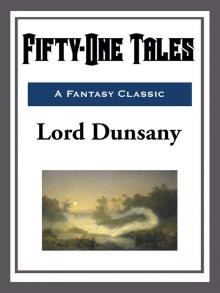 Fifty-One Tales
Fifty-One Tales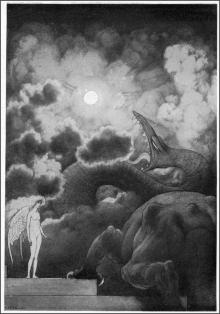 Time and the Gods
Time and the Gods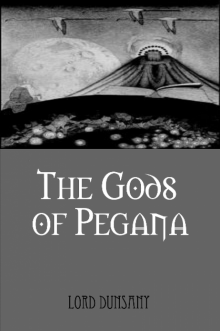 The Gods of Pegana
The Gods of Pegana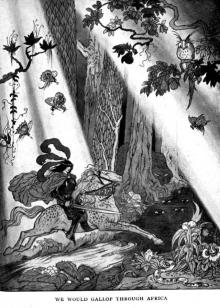 A Dreamer's Tales
A Dreamer's Tales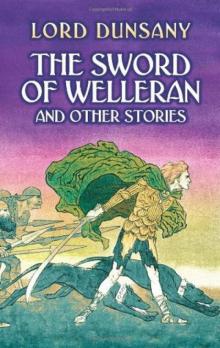 The Sword of Welleran and Other Stories
The Sword of Welleran and Other Stories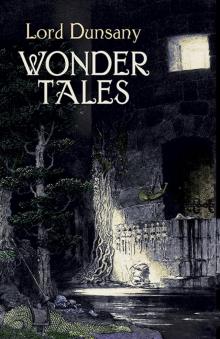 Tales of Wonder
Tales of Wonder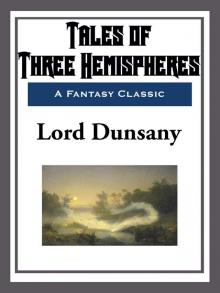 Tales of Three Hemispheres
Tales of Three Hemispheres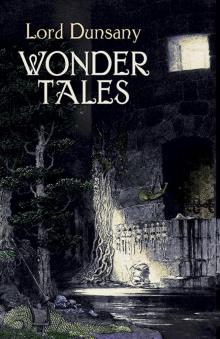 The Book of Wonder
The Book of Wonder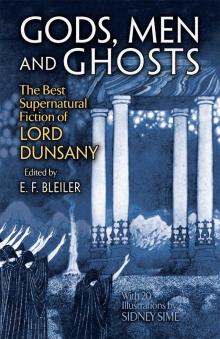 Gods, Men and Ghosts
Gods, Men and Ghosts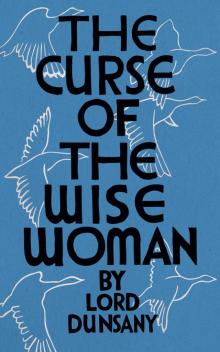 The Curse of the Wise Woman
The Curse of the Wise Woman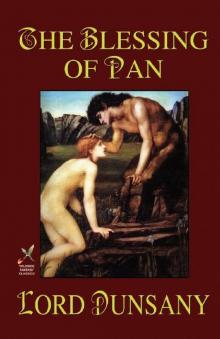 The Blessing of Pan
The Blessing of Pan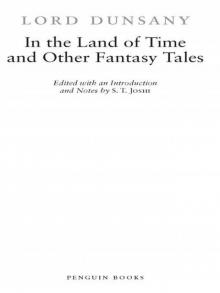 In the Land of Time
In the Land of Time